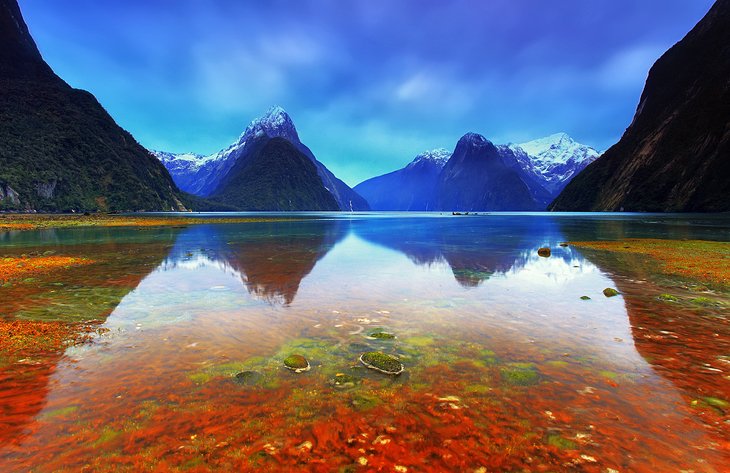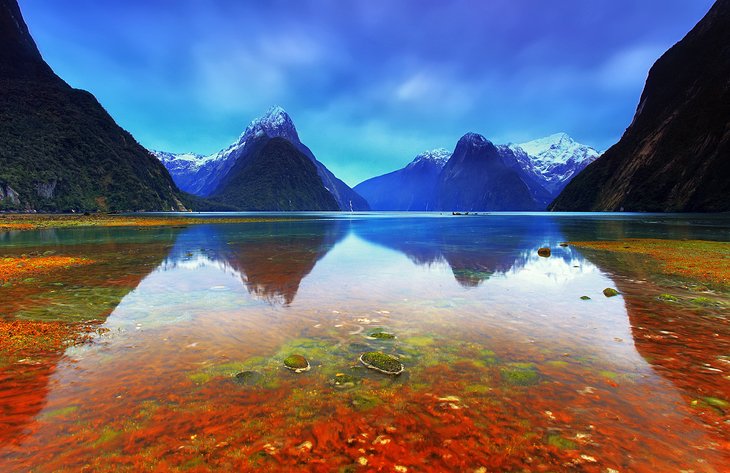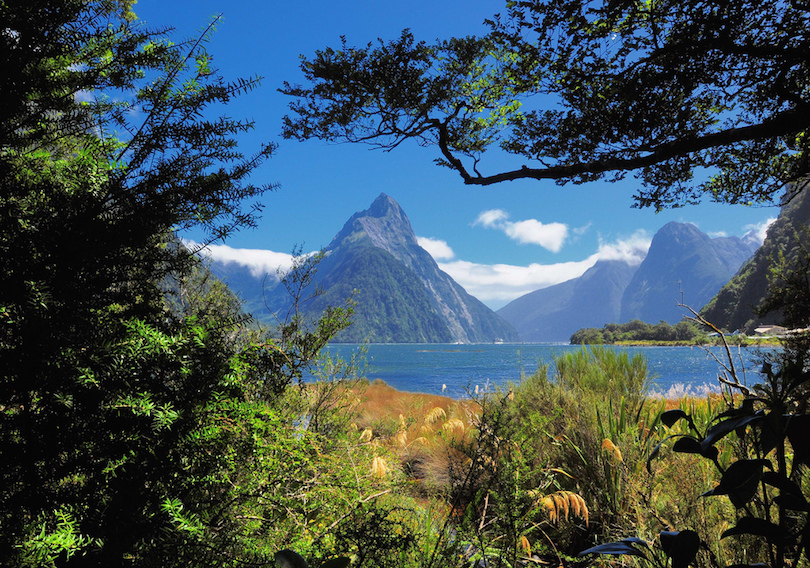
Nestled in the southwestern Pacific Ocean, New Zealand, or Aotearoa (the Land of the Long White Cloud) in the Māori language, is a nation of breathtaking contrasts. It’s a land where snow-capped alpine peaks rise above subtropical rainforests, where ancient glaciers carve their way towards the sea, and where a rich tapestry of Indigenous culture is woven into the fabric of a modern, adventure-loving society. From the geothermal wonders of the North Island to the dramatic fjords of the South, New Zealand offers an unparalleled journey for every type of traveler. This guide will navigate you through its crown jewels, essential history, and the practicalities of planning an unforgettable Kiwi adventure.
A Glimpse into History: The Shaping of Aotearoa
To truly appreciate New Zealand, one must understand its dual heritage. The story begins around the 13th century when intrepid Polynesian navigators, the ancestors of today’s Māori, arrived in their waka (canoes). They established a deep spiritual connection to the land, naming its features and developing a vibrant culture rich in oral history, art, and traditions. This connection, known as kaitiakitanga (guardianship), remains a powerful force in the country today.

Related Articles about Aotearoa’s Allure: An In-Depth Guide to New Zealand’s Top Attractions and Travel Essentials:
- Brazil: A Symphony of Sun, Samba, and Unforgettable Adventures
- Greece: Where Ancient Wonders Meet Azure Dreams – Your Ultimate Travel Guide
- Brazil: A Kaleidoscope of Wonders and the Stays That Define Them
- Casablanca: Where Modernity Meets Moroccan Charm – A Guide to its Finest Stays and Unforgettable Experiences
- Toronto’s Grand Stays: Unveiling the City’s Best Hotels and Unforgettable Experiences
The arrival of European explorers, most notably Abel Tasman in 1642 and Captain James Cook in 1769, marked the beginning of a new era. In 1840, representatives of the British Crown and numerous Māori chiefs signed the Treaty of Waitangi. This founding document was intended to create a partnership, but differing interpretations of its Māori and English texts have led to centuries of conflict and debate over land and sovereignty. Today, New Zealand continues to grapple with this complex legacy, but its bicultural identity is a source of national pride, visible in its language, customs, and the profound respect for Māori culture.
The Crown Jewels: New Zealand’s Top Attractions
New Zealand’s two main islands offer distinct but equally spectacular experiences. The North is known for its volcanic activity and cultural heartlands, while the South is defined by its dramatic mountains, glaciers, and fiords.
North Island Wonders
1. Bay of Islands: A subtropical paradise consisting of 144 islands, the Bay of Islands is a haven for sailing, swimming, and marine life encounters. Take a cruise to the famous "Hole in the Rock" at Cape Brett, watch for dolphins and whales, or kayak in secluded coves. This region is also historically significant; the town of Waitangi is where the eponymous treaty was signed, and a visit to the Waitangi Treaty Grounds is essential for understanding the nation’s history.
2. Rotorua: The epicentre of New Zealand’s geothermal activity and a vibrant hub of Māori culture, Rotorua is a multi-sensory experience. The air is thick with the smell of sulphur from bubbling mud pools, hissing geysers, and steaming hot springs. Visit Te Puia to witness the powerful Pōhutu Geyser and learn about traditional Māori carving and weaving. For an immersive cultural evening, attend a hāngī (a traditional feast cooked in an earth oven) at a living Māori village like Mitai or Tamaki.
3. Tongariro National Park: New Zealand’s oldest national park and a dual UNESCO World Heritage site, Tongariro is a dramatic volcanic landscape. It’s home to three active volcanoes: Ruapehu, Ngauruhoe, and Tongariro. For hikers, the Tongariro Alpine Crossing is a bucket-list item—a challenging day-hike across a surreal terrain of emerald lakes, ancient lava flows, and steam vents. Film buffs will recognize Mount Ngauruhoe as the stand-in for Mount Doom in The Lord of the Rings.
4. Auckland: The country’s largest city is a vibrant, multicultural hub set between two harbours. Known as the "City of Sails," its skyline is dominated by the iconic Sky Tower, which offers panoramic views. For a more relaxed pace, take a short ferry ride to Waiheke Island, a beautiful enclave of vineyards, olive groves, and pristine beaches, perfect for a day of wine tasting and coastal walks.
South Island Splendours

5. Queenstown: Hailed as the "Adventure Capital of the World," Queenstown is a playground for thrill-seekers. Nestled on the shores of the stunning Lake Wakatipu and surrounded by the majestic Remarkables mountain range, the town offers everything from bungee jumping (at its commercial birthplace, the Kawarau Bridge) to jet boating, white-water rafting, and world-class skiing in winter. For those seeking a gentler pace, scenic drives, wine tours in the Gibbston Valley, and lake cruises provide ample opportunities to soak in the staggering beauty.
6. Fiordland National Park (Milford & Doubtful Sound): This is the New Zealand of postcards. Carved by glaciers during the ice ages, Fiordland is a realm of sheer granite cliffs, cascading waterfalls, and dark, serene waters. Milford Sound, with its iconic Mitre Peak, is the most famous fiord. A cruise or kayak trip here is unforgettable, especially after rainfall when the cliffs come alive with thousands of temporary waterfalls. For a more remote and tranquil experience, consider an overnight cruise on the larger, wilder Doubtful Sound.
7. Aoraki / Mount Cook National Park: Home to New Zealand’s highest peak, Aoraki/Mount Cook, this park is an alpinist’s dream. The landscape is raw and powerful, dominated by jagged peaks and immense glaciers. The Hooker Valley Track is one of the country’s most popular short walks, offering breathtaking views of the mountain over swing bridges and glacial lakes. The park is also part of the Aoraki Mackenzie International Dark Sky Reserve, making it one of the best places on Earth for stargazing.
8. Abel Tasman National Park: In stark contrast to the alpine drama elsewhere in the South Island, Abel Tasman is a coastal paradise of golden-sand beaches, turquoise waters, and lush native bush. The best way to explore is by foot along the Abel Tasman Coast Track, one of New Zealand’s "Great Walks," or by sea kayak, allowing you to discover hidden coves and observe seals basking on granite outcrops.
Planning Your Journey: Essential Travel Tips
Visas & Entry: Many visitors, including those from the USA, UK, and most EU countries, can travel to New Zealand visa-free for up to three months but must obtain a New Zealand Electronic Travel Authority (NZeTA) before departure.
Biosecurity: New Zealand has a strict biosecurity system to protect its unique ecosystem. Be sure to declare all food, plant material, and outdoor equipment (like hiking boots, which should be clean) on your arrival form. Fines are steep for non-compliance.
Currency & Costs: The currency is the New Zealand Dollar (NZD). Credit and debit cards are widely accepted. New Zealand is a relatively expensive destination, comparable to Western Europe or North America. Budget for around NZ$200-300 per day for a mid-range trip, though budget backpacking is possible for less.
Safety: New Zealand is one of the safest countries in the world. The biggest risks are often related to nature. Always check weather forecasts before hiking, never underestimate the conditions in the mountains (which can change in an instant), and be aware of rips when swimming at beaches. Remember to drive on the left!
Getting Around: Navigating the Islands
Rental Car or Campervan: The ultimate way to experience New Zealand is with your own wheels. A car or, even better, a campervan provides the freedom and flexibility to explore at your own pace, stopping at scenic lookouts and discovering hidden gems. The roads are well-maintained but often narrow, winding, and hilly, so allow more time for journeys than you might expect.
Domestic Flights: For covering the long distance between the North and South Islands or major cities like Auckland and Queenstown, flying is the quickest option. Air New Zealand and Jetstar are the main domestic carriers.
Buses: A comprehensive network of buses, primarily operated by InterCity, connects most towns and cities. This is a reliable and cost-effective option for those who prefer not to drive.
Scenic Trains: While not a comprehensive network for getting from A to B, New Zealand’s train journeys are destinations in themselves. The TranzAlpine, which crosses the Southern Alps from Christchurch to Greymouth, is considered one of the world’s most scenic train rides.
Where to Stay: Accommodation for Every Style
New Zealand caters to all budgets and preferences.
- Luxury Lodges: For a top-tier experience, a stay at one of the country’s exclusive lodges offers gourmet food, impeccable service, and stunning locations.
- Hotels and Motels: Available in every town. Motels are particularly popular, typically offering self-contained units with kitchenettes, making them a practical choice.
- Backpacker Hostels: A fantastic option for budget travelers and solo adventurers looking to meet others. Networks like YHA and Base are reputable and widespread.
- Holiday Parks & Campgrounds: Ideal for campervans and tents, these parks offer powered sites and excellent facilities. For a more rustic experience, the Department of Conservation (DOC) operates hundreds of basic but beautifully located campsites across the country.
When to Go: The Best Time to Visit
New Zealand’s climate is temperate, but its weather is famously changeable. Each season offers a unique appeal.
- Summer (December – February): Peak season. The weather is warm and sunny, perfect for beach trips, hiking, and water sports. Expect larger crowds and higher prices. Book accommodation and activities well in advance.
- Autumn (March – May): Often considered the best time to visit. The weather is still stable and pleasant, crowds have thinned, and the autumn colours, especially in Central Otago, are spectacular.
- Winter (June – August): The time for snow sports. The South Island’s ski fields in Queenstown and Wanaka are in full swing. The North Island is cooler and wetter, but it’s a great time to enjoy geothermal hot pools in Rotorua.
- Spring (September – November): A beautiful season of renewal. Waterfalls are at their most powerful from melting snow, and the landscapes are lush and green with blooming flowers. The weather can be unpredictable, but it’s a great shoulder season for finding good deals.
Conclusion
New Zealand is more than just a destination; it’s an experience that captivates the soul. It is a land where you can hike on a glacier in the morning and relax on a golden beach in the afternoon. It’s a place where the echoes of ancient Māori legends are heard in the rustle of the forest and the crash of the waves. Whether you come seeking the adrenaline rush of a bungee jump, the tranquility of a remote fiord, or the warmth of its welcoming culture, Aotearoa delivers in abundance, leaving an indelible mark on all who are lucky enough to explore its shores.





